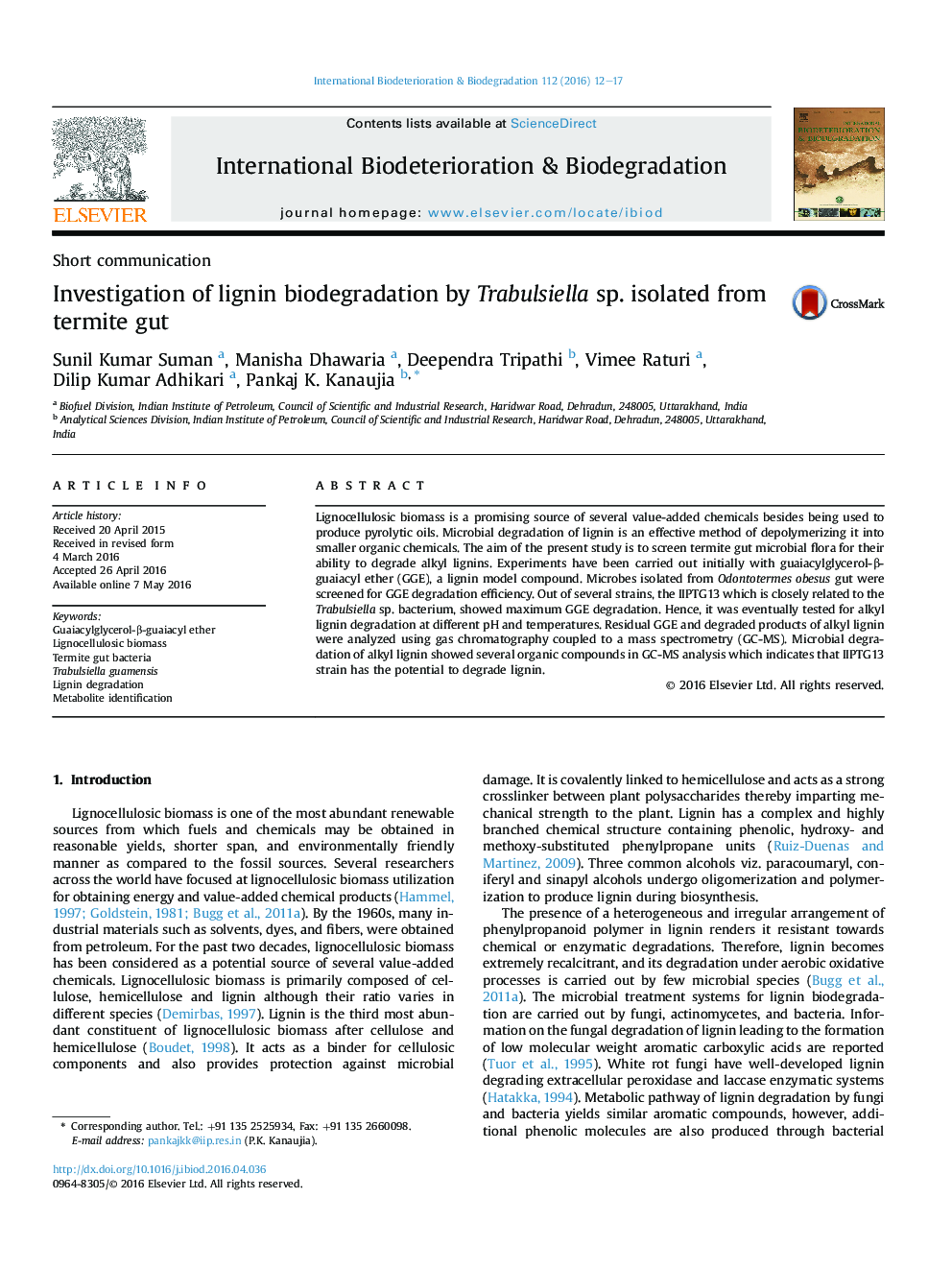| Article ID | Journal | Published Year | Pages | File Type |
|---|---|---|---|---|
| 4364228 | International Biodeterioration & Biodegradation | 2016 | 6 Pages |
•Isolation of termite gut bacteria.•Utilization of lignin model compound.•Lignin biodegradation by isolated bacteria.•GC-MS characterization of compounds.
Lignocellulosic biomass is a promising source of several value-added chemicals besides being used to produce pyrolytic oils. Microbial degradation of lignin is an effective method of depolymerizing it into smaller organic chemicals. The aim of the present study is to screen termite gut microbial flora for their ability to degrade alkyl lignins. Experiments have been carried out initially with guaiacylglycerol-β-guaiacyl ether (GGE), a lignin model compound. Microbes isolated from Odontotermes obesus gut were screened for GGE degradation efficiency. Out of several strains, the IIPTG13 which is closely related to the Trabulsiella sp. bacterium, showed maximum GGE degradation. Hence, it was eventually tested for alkyl lignin degradation at different pH and temperatures. Residual GGE and degraded products of alkyl lignin were analyzed using gas chromatography coupled to a mass spectrometry (GC-MS). Microbial degradation of alkyl lignin showed several organic compounds in GC-MS analysis which indicates that IIPTG13 strain has the potential to degrade lignin.
